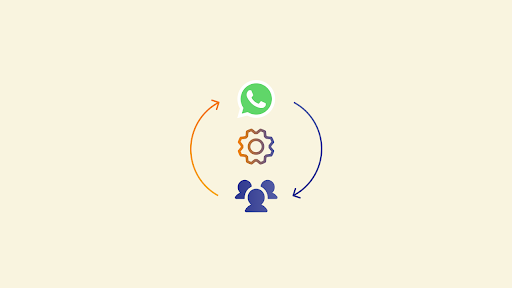With Kerala becoming the first Indian state to go fully digital in its banking, the transformative efforts made by private and public banks are becoming increasingly important. Digital Banking initially took off with banks migrating traditional banking activities like opening bank accounts, KYC updates, fund transfers, cash withdrawals, bill payments, investments and generation of bank statements onto a digital platform. The larger private banks also began using Chatbot Automation early on for their Customer Service requirements. Even though Digital Banking through a mobile phone, laptop or tablet was the norm for most tech-savvy customers, many still used traditional banking methods. And during the pandemic in 2020 and 2021, banks faced insurmountable challenges in serving these customers due to lockdowns and social distancing measures. The pandemic protocols led to disruptions and delays of in-person services at branch locations and adversely impacted the lines of communication between banks and customers.
WhatsApp, the natural choice
To revive communications and continue providing services to customers remotely, banks needed a messaging tool their customers were already using. WhatsApp was the natural choice because practically every smartphone user has this app installed. Millions of users are on WhatsApp and track all their tasks on it multiple times every day. It provides free and easy personal messaging services and is widely used by businesses to communicate with their customer base across demographics.
In WhatsApp Banking, customers receive and send messages on the WhatsApp chatbot, a user interface they find intuitive and convenient. Users prefer staying in the same app environment and interacting with various entities instead of stepping out to click different apps for each activity. This is why customers prefer WhatsApp Banking chatbots over website chatbots and other in-house banking applications.
WhatsApp Banking, under the hood
The WhatsApp Banking platform is built by integrating several applications with WhatsApp. Technology partners and vendors hired by banks integrate Core Banking APIs with that of an NLP (Natural Language Processing) Engine and WhatsApp. The NLP mechanism analyses and interprets the meaning, context and intent of the customer’s message typed into WhatsApp and responds with a suitable answer. The engine is required to do all of the above in the language used by the customer.
The chatbot is always a work in progress from a technology standpoint because the customer queries asked over a period of time help refine the platform and the accuracy and efficacy of responses. In the interim, a hybrid AI and live agent model are often deployed to handle customer queries suitably and prevent inappropriate or unrelated responses.
WhatsApp Banking, a bridge between Customers and Banks
WhatsApp has proven to be a powerful tool for banks looking to bridge the communication gap with their customers by making a range of services remotely accessible. Customers can easily perform several banking tasks, and the banks can reach them more effectively on WhatsApp than any other virtual medium (namely, phone calls, emails, and text messages). These are some of the banking services where WhatsApp is improving customer engagement -
-
Seamless Customer Support - WhatsApp is especially useful for customer support and answering customer questions in real-time. It is the digital medium of choice for customers who prefer messaging apps to phone calls or email.
-
Efficient Account Management - Checking account balances, making payments, and renewing FDs are some of the periodic tasks customers can now accomplish on WhatsApp, which is a massive time-saver for them.
-
Engaging Personalized Communication - Banks can send personalized messages related to product recommendations or special offers to customers over WhatsApp, which customers are more likely to read and respond to in real-time. This service helps banks build strong, loyal, and long-lasting customer relationships.
-
Timely Fraud Detection - Given the real-time nature of WhatsApp, banks can alert customers of potential fraud using WhatsApp and also provide information on how to protect their bank accounts.
WhatsApp Banking, enhancing the Customer Experience
By virtue of being the people’s choice for default messaging app, WhatsApp has managed to enhance the customer experience significantly in many ways -
-
Convenience - WhatsApp Banking enables customers to access banking services from the messaging app already in use without downloading a separate banking app or visiting the bank’s branch. This is especially useful for customers who can’t access their bank’s branch or aren’t familiar with Net Banking.
-
Speed - It allows customers to perform a range of banking tasks quickly and easily without waiting in line at the branch location or filling out any paperwork.
-
Security - WhatsApp uses end-to-end encryption to secure customer messages and transactions, thereby protecting user privacy.
-
Multi-linguistic Service - WhatsApp Banking provides customer service in two or more languages based on the platform's capabilities. English is the default language, followed by Hindi and/or the state's regional language.
WhatsApp Banking positively transforms how customers transact and interact with banks and offers a convenient and efficient way for customers to access essential banking services.
However, in the near future, disruptive technologies like ChatGPT will be game-changing for the conversational user experience on channels like WhatsApp.
This article was originally published in Times Now.








